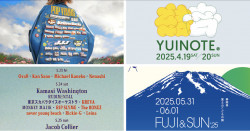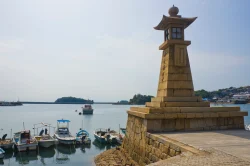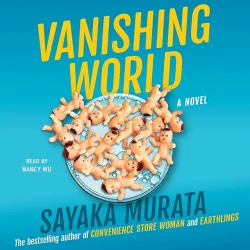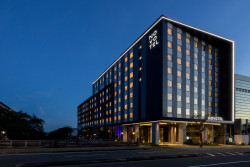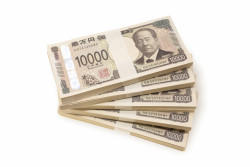
April 15, 2010
Roppongi Crossing
The Mori’s annual show ticks boxes and encourages lunatics
By Metropolis
Originally published on metropolis.co.jp on April 2010
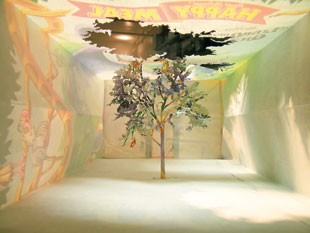
Yuken Teruya, Notice-Forest, 2005, paper bag, glue. Photo by Keizo Kioku
In economically tough times, there is a tendency to trim unnecessary spending and cut back on luxuries. As art is often viewed as an expendable extravagance, many curators and artists are feeling insecure. While some respond by working harder to make their “product” more appealing, others try to convince us of its great importance. Both approaches contribute to the faint note of desperation in the air at “Roppongi Crossing 2010,” the Mori Art Museum’s triennial group show of contemporary art.
Firstly, this is a fun and thought-provoking show, with a wide amplitude of works on display. There is very little repetition, and each of the 20 individual artists or art teams occupies a very different space. Also, the artists express a number of interesting concepts, prompted perhaps by the exhibition’s over-earnest curators. Subtitled “Can There Be Art?” the theme is the importance of art at a time of “economic crisis and environmental problems,” with the emphasis on works that (a) have social relevance and (b) are in touch with “the streets.”
A good example of the former is the work of Okinawan artist Teruya Yuken, who presents Upside Down Hinomaru (2006), an ironic comment on the national icon, and For the World to Come (2004), an installation made from pizza boxes that draws attention to an incident on Okinawa in which the US military sealed off an accident site and refused to let Japanese police through, but allowed in pizza delivery vehicles.
Street art gets a look in with a graffiti artist known only by a symbol, the large clattering sound sculptures of Ujino, and an expansive mural painted over a skate park that’s been constructed inside the exhibition.
In these exhibits and several others, there is a palpable attempt to appeal to groups who normally don’t frequent museums. All very laudable, but the relentless emphasis on ticking the boxes marked “politics,” “social relevance” and “new audience” causes the show to lose sight of the main business of art: to delight and astound our aesthetic sense. Once this has been achieved, it’s relatively easy to deliver whatever mindf**k of a message you want, but without this, it’s a case of “Cool message, but who’s listening?”

Hiraku Suzuki, Road, 2010, approximately 5,000 pieces of reflector, mixed media. Photo by Ooki Jingu
Of all the works on display at “Roppongi Crossing 2010,” only two have any real aesthetic impact: Chim Pom’s Art Is in the Party (2010), a decadent, garish mash-up of food replicas in which pieces of sushi have gone walkabouts, leaving trails of slime behind them, and Hiraku Suzuki’s Road (2010), an installation made from 5,000 tastefully arranged reflectors (the kind you stick on the backs of vehicles). Yuken Teruya’s Notice-Forest pieces (2007-10), tiny tree sculptures made from and set inside ordinary paper bags, also have some aesthetic merit, but they are so low-key you could easily miss them.
The overriding impression that this exhibition left me with is of the terrible politeness of the Japanese art world. Rather than have artists competing directly against each other to be the best in a particular field—paintbrushes at dawn, if you will—there seems to be a tendency to let them go off quietly on their own to find a completely new and unoccupied niche, where they needn’t bother each other with any nasty competitiveness—of the sort, say, that drove Matisse and Picasso.
Only this can explain the art of Masaru Aikawa, a skilled lunatic or idiot savant, who is able to minutely reproduce famous rock CD covers to scale using acrylic paint. What turns the craziness level up to 11 on the Spinal Tap Marshall amp of insanity is that each cover is accompanied by an actual CD, so that, if you really want to, you can hear the artist’s a cappella renditions of Motorhead’s Ace of Spades or Iggy Pop’s Lust for Life.
Mori Art Museum
Roppongi Crossing 2010: Can There Be Art? The Creative Potential of a New Japan. Various media. Until July 4, ¥500 (MS and under)/¥1,000 (HS, univ)/¥1,500 (adult). Jules de Balincourt. Painting. Until July 4, ¥500 (MS and under)/¥1,000 (HS, univ)/¥1,500 (adult). 3F Mori Tower Roppongi Hills, 6-10-1 Roppongi, Minato-ku. Tel: 03-5777-8600. Open Wed-Mon 10am-10pm, Tue 10am-5pm. Nearest stn: Roppongi. www.mori.art.museum/eng
